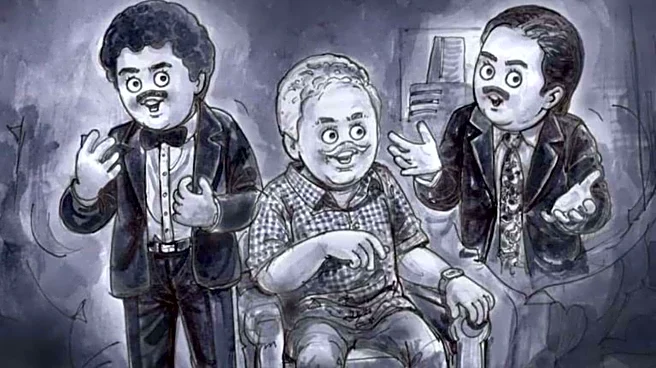Language is the medium through which children express their identities, make sense of the world, and participate in learning. It is not simply a collection of words but a dynamic, social process that shapes thought and experience. As Krishna Kumar (2006) notes in The Child’s Language and the Teacher, classrooms often restrict children’s talk to impersonal or predetermined exchanges, which risks silencing their natural curiosity and voice. In this article, I want to explore why talk matters in education, drawing not only on Kumar’s work but also on insights from other scholars of children’s language development, while reflecting on everyday classroom experiences.
In his opening chapter, Kumar asks a fundamental question: What is language? He reminds
us that language is not merely a formal subject to be mastered but a living, evolving form of communication that allows children to interpret and share experiences. This aligns with Paula Menyuk’s (1971) observations in What Young Children Know about Language, where she shows that children bring to school a surprising depth of linguistic awareness. Even at a young age, they demonstrate an understanding of grammar, sounds, and meanings that cannot be underestimated. I often notice this in my own class when children play with rhymes, invent words, or correct each other’s speech playfully; they are already aware of language’s patterns long before formal teaching begins.
Yet, when children are denied opportunities to use this knowledge meaningfully in school, they disengage. Kumar argues that classrooms often privilege impersonal talk. I have seen this in practice when children are asked only to repeat textbook sentences; their responses are mechanical, and their eyes drift elsewhere. But when invited to talk about themselves, their faces light up. A boy reluctant to eat his lunch became animated when asked about food he enjoys at home, and a hesitant speaker grew confident when allowed to share about a sibling. Such talk bridges the child’s world and the school’s world. Jerry Zutell (1981), in Learning Language at Home and at School, reinforces this point, emphasising that children’s home language experiences form a vital foundation for school learning. Ignoring these experiences risks creating a disconnect that alienates them from the curriculum.
Observation of surroundings also plays a key role. Kumar suggests that schools themselves are rich with possibilities for talk. I recall a moment when a child pointed out birds sitting quietly on a tree. This led to a collective discussion: Why do birds sing? Do they all have the same voice, or are their voices also different, just like us (humans)? Where do they go when it rains? These conversations may seem simple, but they demonstrate children’s ability to connect observation with inquiry. Children use language not only to describe but also to inquire, imagine, and relate experiences. When teachers validate such observations, they are acknowledging these multiple functions of language.
Pictures, too, become a democratic medium for expression. When children are shown a picture book, their responses are never limited to what is visible; they ask why events are happening, predict outcomes, and invent possibilities. In my classroom, children once turned a picture of a boy running into an elaborate story about where he might be going and what he might encounter. This echoes Cambourne’s (1988) view in Language, Learning and Literacy that literacy and language thrive in environments where children are immersed in meaningful use, rather than in isolated drills. A picture, in this sense, is not merely an object to be named but a trigger for thought and talk.
Stories deepen this engagement further. Kumar stresses the significance of storytelling and the conversations that follow. I recall narrating a story after which a child related the main character’s struggles to something she had seen at home. This opened a flood of associations among her peers, each connecting the narrative to their own lives. Such discussions point out that children actively construct meaning from language. They also show that listening and speaking are interdependent; one fuels the other. Storytelling in this way becomes dialogic rather than monologic, an exchange that strengthens comprehension, empathy, imagination, and creativity.
Acting out stories takes this one step further. Kumar argues for everyday enactments rather than polished performances. In one activity, my class was asked to dramatise a simple tale. Instead of reproducing it mechanically, the children improvised, changed lines, and even invented endings. The result was not a perfect play but a vibrant exercise in imagination and collaboration.
The teacher’s role in all this cannot be overstated. Teachers must adjust their responses, tone, and questions to the needs of the child. I remember a withdrawn child who rarely spoke. Instead of asking him direct questions, I tried a playful approach: “Guess what I saw on the way here?” His eyes lit up, and he began to respond eagerly. Kumar advises teachers to create such playful contexts, and Cambourne supports this by arguing that authentic engagement happens when children are both challenged and supported. By listening attentively and valuing every contribution, teachers turn talk into a tool for empowerment rather than assessment.
The implications are clear. When classrooms neglect opportunities for genuine talk—about oneself, one’s surroundings, or shared stories—children become disconnected from learning. But when talk is welcomed, they flourish. Each anecdote from practice shows that talk is not an “extra” but the lifeline of education. Dewey long ago emphasised that education grows out of experience, and language is the bridge through which experiences are shared. Kumar’s call for centring talk in classrooms echoes this philosophy, reminding us that schools must be places where children’s voices shape the curriculum.
In conclusion, children enter school with rich linguistic resources drawn from home, play, and observation. Teachers must build upon this foundation by creating spaces for authentic talk. As Kumar notes, the absence of such opportunities results in alienation, while their presence fosters creativity, confidence, and deeper learning. Whether through conversations about food, birds outside the window, a picture in a book, or a story acted out, talk is the means by which children learn to think, imagine, and belong. As educators, our task is not only to teach language but to listen to it, nurture it, and let it flourish in all its forms.
(This article was first published in The Armchair Journal)
Vaishali Sharma is a Master’s student in History at the University of Delhi, passionate about inclusive and holistic education. Her research interests include education, public policy, and international relations, with published works on curriculum. Views expressed in the above piece are personal and solely those of the author. They do not necessarily reflect News18’s views









/images/ppid_a911dc6a-image-176147302322385927.webp)





